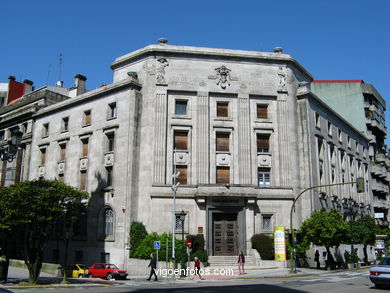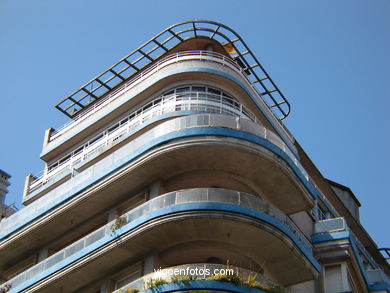Postwar period architecture (1940-60)
Vigo: Postwar period architecture (1940-60)
The postwar period is a cultural change and economic architecture that responds to a paralysis of the modernization process. In the 40s it reuses the academic and historicism, and in all 50 starts a recovery towards more modern styles.
Rationalism is rejected because it was considered a symbol of modernity of the Second Republic and some architects have to go into exile for political reasons.
Given the inability to create a unique architecture of the new system architecture required by the new bourgeoisie is continuity of academic eclecticism of the 20s.
In Vigo gradually disappears rationalist architecture of Francisco Castro Dams and continue with the regional architecture that enjoyed wide acceptance. In general there is a paralysis of the architectural evolution and continuity of the previous styles.
Lack of iron and concrete in postwar makes further use of the granite facades leaving the concrete for the interior. The woodworking craft is present in both indoors and outdoors.
In the 50 starts gradually modernizing process in architecture with the addition of young architects like Joseph Bar Boo and continuity Dams Francisco Castro, Pedro Alonso Perez and Genaro Alvarez de la Fuente.
Architects representative
- Antonio Palacios Ramilo
- Francisco Castro Dams
- Manuel Gómez Román
- Genaro Alvarez de la Fuente
- Antonio Tapias Cominges
Representative buildings
- Theatre - Film Fraga - Luis Gutiérrez Soto (1942)
- Headquarters Building Caixanova - Antonio Cominges (1953)
- Antigo Bank of Spain - Romualdo de Madariaga (1943)
.
